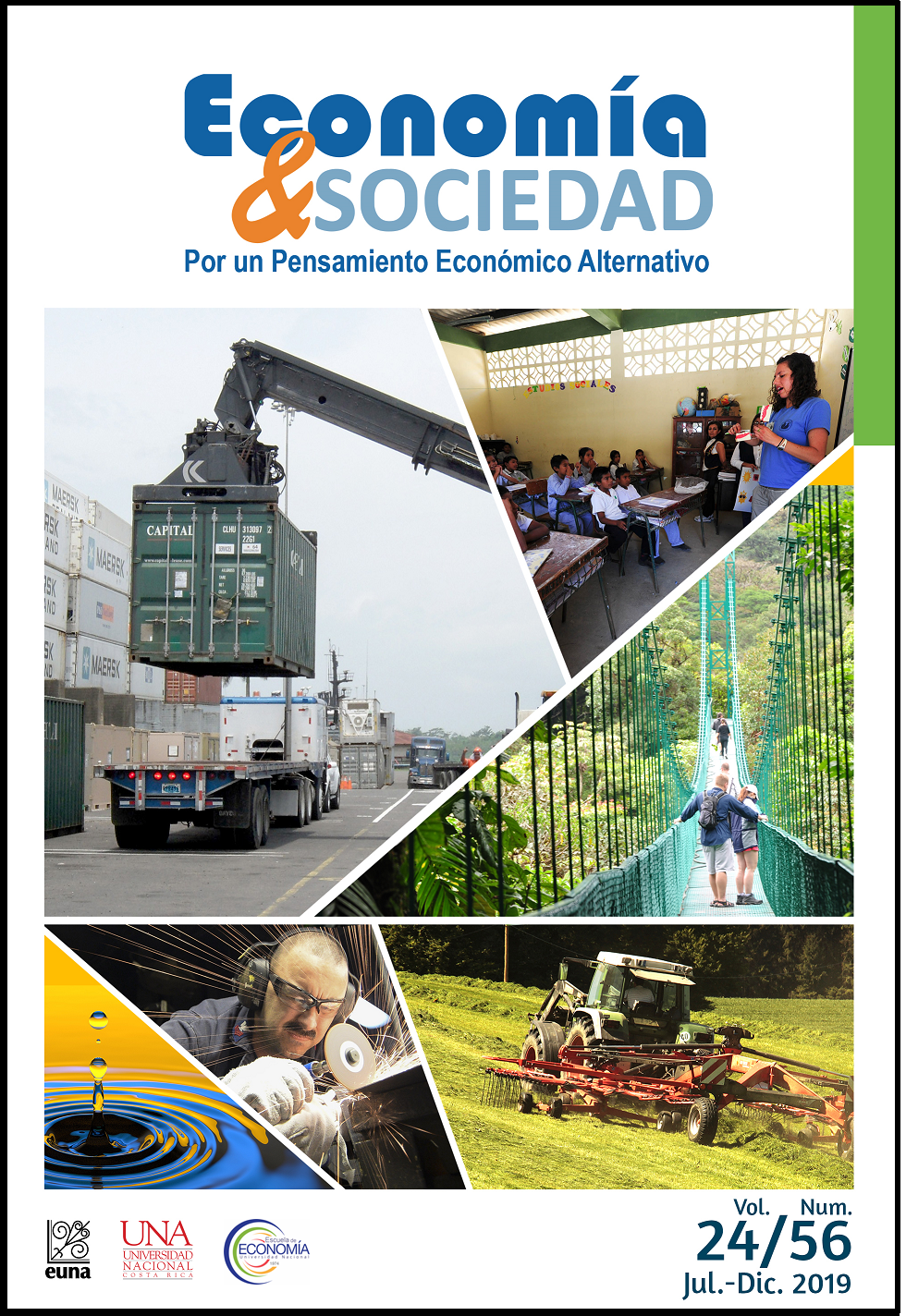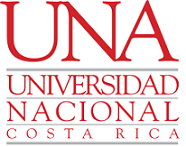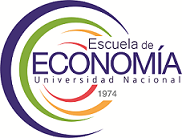SEM analysis for tourist expenditure in an emerging country
DOI:
https://doi.org/10.15359/eys.24-56.4Keywords:
SEM, touristic expenses, socioeconomic variables, motive variablesAbstract
The following study attempts to examine the relationship between consumer preferences and expenditure in a Structural Equation Model (SEM) framework. We use data from a survey applied in an emerging country like Peru. There were 6 772 respondents classified by sex, country of residence, education level, and age. The foreign respondents specified their motives and preferences to travel as well as money spent. The SEM technique permit to find a relationship between the latter variables. This assessment is relevant for tourism policymakers since it will help to find the main drivers of expenditure by foreign visitors within an emerging country. Our study permitted us to identify the motives to visit: leisure, business and education, and others as main drivers of touristic expenditure.
References
Bollen, K., Tueller, S., and Oberski, D. L. (2013). “Issues in the Structural Equation Modeling of Complex Survey Data”. In Proceedings of the 59th World Statistics Congress. Hong Kong. Downloadable at http://www.2013.isiproceedings.org/Files/STS010-P1-S.pdf
Chaitip P., Chaiboonsri, C., Kovács, S. and Balogh, P. (2010). A Structural Equation Model: Greece’s Tourism Demand for Tourist Destination. Applied Studies in Agribusiness and Commerce, (2), pp.75-83. doi: https://doi.org/10.22004/ag.econ.91116
Correia A., Santos C., Pestana C. (2007). Tourism in Latin America: A Choice. Analysis Annals of Tourism Research, 34(3), July, pp. 610-629. doi: https://doi.org/10.1016/j.annals.2007.01.007
Dardis, R., Derrick, L., and Wolfe (1981). Cross-section studies of recreation expenditures in the United States. Journal of Leisure Research, (13), pp. 181-194. doi: https://doi.org/10.1080/00222216.1981.11969482
Dardis, R., Soberon-Ferrer, H., and Patro, D. (1994). Analysis of leisure expenditure in the United States. Journal of Leisure Research, (26), pp. 309-321. doi: https://doi.org/10.1080/00222216.1994.11969964
Desforges, L. (2000). State tourism institutions and neo-liberal development: A case study of Peru. Tourism Geographies: An International Journal of Tourism Space, Place and Environment, 2(2). doi: https://doi.org/10.1080/14616680050027888
Divino, J. A. and McAleer, M. (2010). Modelling and forecasting daily international mass tourism to Peru. Tourism Managemen, 31(6), pp. 846-854. doi: https://doi.org/10.1016/j.tourman.2009.09.002
Dong-Wan, K. and Stewart, W. (2002). A structural equation model of residents’ attitudes for tourism development. Tourism Management, 23(5), pp. 521-530. doi: https://doi.org/10.1016/S0261-5177(02)00006-7
Hu, L. and Bentler, P. M. (1999). Cutoff criteria for fit indexes in covariance structure analysis: Conventional criteria versus new alternatives. Structural Equation Modelling, 6(1), pp. 1-55. Educational Psychologist, 27(1), pp. 65-90. doi: https://doi.org/10.1080/10705519909540118
Jones, T., Wood, D., Catlin, J., and Norman, B. (2009). Expenditure and ecotourism: Predictors of expenditure for whale shark tour participants. Journal of Ecotourism, 8(1), pp. 32-50. doi: https://doi.org/10.1080/14724040802517922
Jöreskog, K. G. and Sörbom, D. (1982). Recent developments in structural equation modeling. Journal of marketing research, 19(4), pp. 404-416. doi: https://doi.org/10.1177/002224378201900402
Kruger, M. (2009). Spending behaviour of visitors to the Klein Karoo National Arts Festival. MA dissertation North-West University, Potchefstroom, pp. 66. Downloadable at: https://repository.nwu.ac.za/handle/10394/2479
Lehto, X., O’Leary, J., and Morrison, A. (2004). The effect of prior experience on vacation behavior. Annals of Tourism Research, 31(4), pp. 801-818. doi: https://doi.org/10.1016/j.annals.2004.02.006
Mitchell, R. E. and Reid, D. G. (2001). Community integration: Island tourism in Peru. Annals of Tourism Research, 28(1), pp. 113-39. doi: https://doi.org/10.1016/S0160-7383(00)00013-X
Mok, C. and Armstrong, R. (1995). Leisure travel destination choice criteria of Hong Kong residents. Journal of Travel and Tourism Marketing, 4(1), pp. 99-104. doi: https://doi.org/10.1300/J073v04n01_07
Mok, C. and Lam, T. (1997). A model of tourists’ shopping propensity: A case of Taiwanese visitors to Hong Kong Pacific. Tourism Review, 1(2), pp. 137-145. Downloadable at: https://www.ingentaconnect.com/contentone/cog/ptr/1997/00000001/00000002/art00006
Saayman, M. and Saayman, A. (2014). How Deep are Scuba Diver’s pockets. Tourism Economics, 20(4), pp. 813-829. doi: https://doi.org/10.5367%2Fte.2013.0299
Seiler, V., Hsieh, S., Seiler, M., and Hsieh, C. (2002). Modeling Travel Expenditures for Taiwanese Tourism. Journal of Travel & Tourism Marketing, 13(4), pp. 47-60. doi: https://doi.org/10.1300/J073v13n04_03
Swanson, K. and Horridge, P. (2004). A structural model for souvenir consumption, travel activities, and tourist demographics. Journal of Travel Research, 42(4), pp. 372-380. doi: https://doi.org/10.1300/J073v13n04_03
Van der Merwe P., Slabbert E., and Saayman M. (2011). Travel Motivations of Tourists to Selected Marine Destinations. Int. J. Tourism Res. (13), pp. 457-467. doi: https://doi.org/10.1002/jtr.820
Vargas-Sánchez, A., Porras-Bueno, N., and Plaza-Mejía, M. (2011). Explaining residents’ attitudes to tourism: Is a universal model possible? Annals of Tourism Research, 38(2), pp. 460-480. doi: https://doi.org/10.1016/j.annals.2010.10.004
World Bank (2016). “Database”. Downloadable at: http://data.worldbank.org/
World Travel and Tourism Council [WTTC]. (2016). Economic Impact of Regions. Oxford Economic. Downloadable at: https://www.wttc.org/-/media/files/reports/economic-impact-research/regions-2019/world2019.pdf
Published
How to Cite
Issue
Section
License
This publication is subject to the Creative Commons License; therefore, its attributions and restrictions must be respected.
Authors publishing in this Journal accept the following conditions:
- Authors retain copyright ownership and give the Journal first publication right of the paper, which is registered with the Creative Commons Attribution-NonCommercial-ShareAlike 4.0 International License. This license allows third parties to use the published work provided it is sourced as firstly published in this Journal.
- Authors may enter into other independent and additional contractual agreements for the non-exclusive distribution of the article published in this Journal (e.g., to be included in an institutional repository or published in a book) provided it is clearly stated that the work was published in this Journal for the first time.
- Authors are allowed and recommended to publish their work on the Internet (for example, on institutional or personal pages) before and during the review and publication process, as it can lead to productive exchanges and a greater and faster dissemination of work published.

The Economía & Sociedad Journal, published by Universidad Nacional, is licensed under a Creative Commons Reconocimiento-NoComercial-CompartirIgual 4.0 Internacional License. Based on http://www.revistas.una.ac.cr/index.php/economia.








